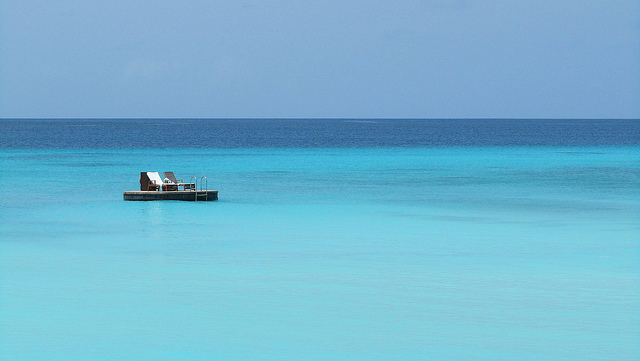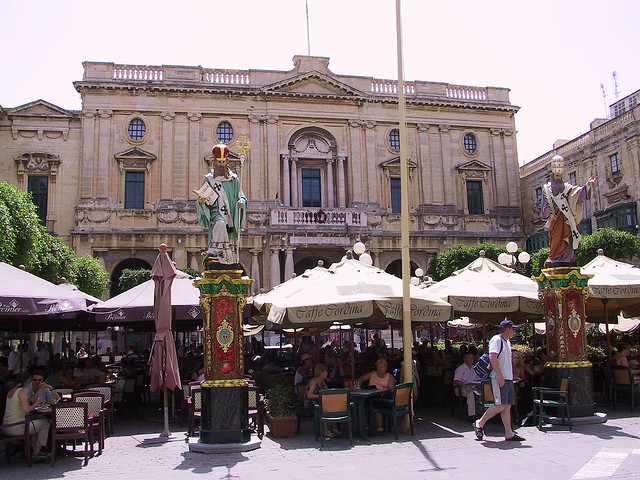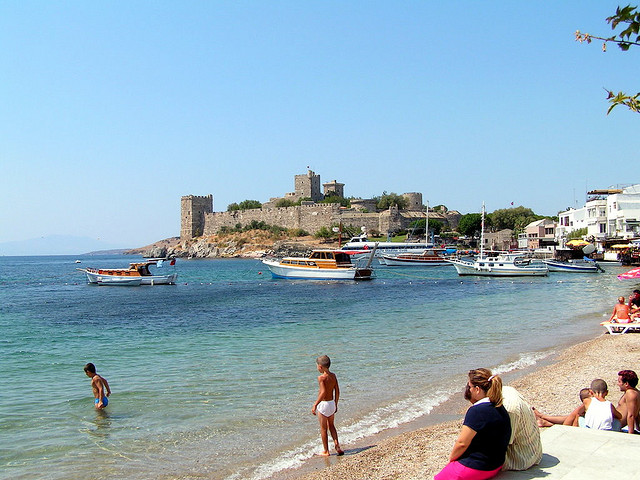Tag Archives: Beach
Gorgeous Grande-Terre: Must Do’s for Every Day-tripper
Grande-Terre Island is the name given to the eastern half of Guadeloupe Island (with the other half known as Basse-Terre). It is the home of most of Guadeloupe’s tourist resorts and farmlands, due to its beautiful land and coastline. If you you’re only visiting Grande-Terre Island for a day trip however, what attractions can you see to keep busy?
Aquarium de la Guadeloupe
For people that want to spend the day relaxing and enjoying marine life, Aquarium de la Guadeloupe is an excellent choice. With its variety of marine life, visitors can enjoy seeing everything from crabs to sharks. Daily snorkelling tours are also available, so visitors can experience the beauty of marine life first-hand, with a biologist and diving instructor.
Ft. Fleur D’épee
If you want to take full advantage of all inclusive long haul holidays, visiting the fortress in Bas-du-Fort is a must. Built between 1759 and 1763, the fortress can be found on the hillside behind a deep moat. The fortress is well-known for its battles between the French and English in 1794, and visitors can learn everything they need to about the battles and fortress history through guided tours.
Musée Camelia Costumes et Traditions
If you want to see a true labour of love, you must take the time to visit the Musée Camelia Costumes et Traditions. The private collection, owned by a retired English teacher named Camelia Bausivoir, includes examples of the dress of different societies through the ages. You can see baptism outfits, madras headdresses, colonial pith helmets, and much more.
Cathédrale de St-Pierre et St-Paul
For tourists that enjoy visiting religious sites, Cathédrale de St-Pierre et St-Paul is a must. Built in 1807, the cathedral has Creole-style balconies and stained windows that give it a dramatic effect. Since it was battered by hurricanes, it is under renovation and supported by ribs and pillars.
Musée St-John Perse
If you have a strong love for French culture and literature, visiting the Musée St-John Perse is sure to please. The museum is dedicated to Alexis Léger (better known as Saint-John Perse), a famous poet. In fact, in 1960, he won the Nobel Prize for literature. Most of his best work was inspired by his love for Guadeloupe.
Le Gosier
Le Gosier is a popular place for many tourists due to its shops, nightclubs, rental car agencies, and its casino. Although it simply used to serve as a stopping place between Pointe-à-Pitre and Ste-Anne, it is now one of the most popular tourist attractions.
St-François
Aside from Gosier, St-François is another area fast growing in popularity with tourists. In fact, it is believed that St-François is quickly overtaking Gosier as being the most fashionable and luxurious resort area. The area includes hotels, restaurants, bars, shops, golfing, and a casino.
With so much to see and do in Grande-Terre, any tourist can enjoy a wonderful day trip.
Alex Norman loves living under the stars. An avid traveller, he loves to write about a variety of topics that revolve around the great outdoors.
The Maldives: what to expect in terms of culture
Postcard-perfect beaches, balmy weather, lush greenery – the Maldives is an archipelago that virtually everyone wants to visit. And that’s very conservative on my part, I think; I mean, if money was no object, who wouldn’t come here? Most of the time, all you hear about is its beaches and luxury hotels; its diverse culture, meanwhile, is rarely mentioned.
Today is the day that changes, however, as culture is going to be the focus of this post. If what you read inspires you and you decide to sort out the practical details of your holiday right away, such as finding a hotel, just do a Google search for the Maldives and plenty of info will pop up.
A glance at history
Any destination’s culture is largely shaped by its history, so when I tell you that the Maldives has a fascinating past under the rule of a number of countries and suffused in myth, you should recognise that now is the time to get excited.
The first thing to know is that the islands of the Maldives dot the trading route of the Indian Ocean – something that has meant that visitors from far and wide having been coming here both in the form of short stops and of settling for centuries on end. So, the country is no stranger to overseas influences, which have made their impact on the culture over the years.
Just to give you an idea of what influences are at play, the original settlers here belonged to the Buddhist faith, but the nation converted to Islam back in 1153. In 1558 the Portuguese invaded, before being forced out in 1573. The archipelago then became a protectorate of Great Britain in 1887, gaining independence in 1965. In 1972, the first-ever island resort was built – a real landmark when you think how important local tourism is now.
Language, arts and more
So, you now have a (very) broad outline of the Maldives’ history, which means it’s time to look more directly at what you’ll experience in terms of culture. We’ll begin by taking a quick look at things like language, which you’ll come into contact with as soon as you arrive.
The national tongue is Dhivehi, but you’ll find the dialect can vary depending on whereabouts you are. For instance, on the inhabited islands in the far south you’ll notice a distinctly different dialect from places like Male’ – something that’s often attributed to the former’s relative isolation.
If you go island hopping, expect to discern differences in people’s appearances from one atoll to the next. This is down to the Maldives’ trade route location, which saw peoples from places like Africa, Arabia and south Asia settle here.
So, it’s easy to see the country is something of a melting pot. What I like doing is exploring the local arts and picking out different slices of heritage – as well as seeing how these diverse elements come together to create something new.
For instance, head into a mosque and you’re likely to see intricate patterns on the wooden beams, which can be traced back to south-east Asian influences. In terms of music, keep your eyes (and ears!) peeled for the bodu-beru, which is like an African drum.
Go island hopping, meanwhile, and you’re likely to do so in a dhoni – a traditional Maldivian boat. Look closely, though, and you’ll see it looks very similar to an Arabian dhow.
A trip to Malta for a holiday or an English course
The European island archipelago of Malta in the Mediterranean Sea is attractive to both travelers and language learners alike and its rich culture, colonial history and pre-history and consistently pleasant climate ensure that you’ll never be short of something to see, do or explore here.
Malta is host to some of the Mediterranean’s most attractive beaches and lagoons and the varied nature of these beauty spots allow you to spend a day on a touristy beach mixing with fellow holiday-makers and locals alike, followed by a day in a secluded bay enjoying some peace and quiet. The more popular, busier beaches offer a wide range of water sports so a day in the sun needn’t consist purely of lying on a sunbed enjoying a good book – although if this is your idea of a relaxing holiday, then Malta’s warm summer and relaxed atmosphere will appeal to you! The crystal-clear, turquoise waters which surround the island make it a perfect base for scuba diving and offer an opportunity to explore the island’s diverse marine life as well as underwater caves, reefs and wrecks.
Inland, there is much evidence of Malta’s fascinating and varied history to be explored. A number of archaeological sites offer a glimpse into life on the island over 5000 years ago and much of Malta’s colonial past is still evident in the architecture, best seen on a lazy stroll through the island’s narrow streets.
For travelers who want more from their trip than a sun tan and a cultural education, Malta is a great place to enroll on an English course. As a bilingual island there are numerous opportunities to practice your language skills outside of the classroom – a trip to one of the many village markets, for example, allows you to indulge in a spot of bargain-hunting as well as striking up a conversation with the locals. One of Malta’s restaurants which offer fabulous, fresh seafood or its several bars and nightclubs give you the chance to let your hair down and make new friends – all the while speaking English of course!
Beautiful, bright Bodrum, Turkey!
I’ve been going to Turkey for the last seven years, and I’ve watched it change as tourism has become big business over recent years. The number of visitors to this wonderful, mysterious country has increased dramatically, and Bodrum is one of those booming resorts.
Fantastic beaches, lively night-life, delicious restaurants, history, culture, and lots of shopping, all with the potential to explore further afield – it’s no wonder Bodrum is so popular.
There are some fantastic package holidays to Bodrum this summer, ranging from all-inclusive, half-board, full-board and self-catering. Personally, I tend to book self-catering, as there are some wonderful restaurants around and I enjoy the freedom to go where I please in the evening, however if you’re travelling with children, I’d recommend all-inclusive, to keep costs on holiday low.
Getting to the airport itself can be a hassle, and you’ll find that many flights to Turkey are at awkward times of the day from the UK. A great way to save money and combat stress is to pre-book Airport parking at your terminal, meaning no need to book an expensive airport taxi, and putting the control firmly back in your hands. You’ll find a service no matter where you fly from, and I recently used Stansted Airport parking at Airparks, with no complaints from me whatsoever! I’d highly recommend you look into what’s available from your airport.
Once you land at Bodrum Airport, it’s under an hour’s transfer to your hotel, depending on where you’re staying. It’s easy to get around resort, thanks to the handy dolmus, or mini-bus, running around resort, but Bodrum is quite compact, so I’d suggest a pair of comfortable flip flops and head out on foot and explore. The dolmus is invaluable for exploring the surrounding area, such as the nearby resort of Gumbet, with its wide beach and plentiful water-sports. Alternatively, haggle the price of your excursions from a street vendor and head out on a jeep safari into the surrounding countryside, through villages and hills. A boat trip is also a must-do excursion, as well as a traditional Turkish bath for that longer lasting tan.
In Bodrum itself, the castle should be your first port of call, stood imposing over the town. It also hosts the popular Museum of Underwater Archaeology, which is a surprisingly interesting morning or afternoon’s entertainment, and one the kids will love too.
For retail therapy hits, the marina has the best in terms of designer buys, however I love the markets for unusual souvenirs, and the haggling is fun once you get used to it.
As with most Turkish resorts, night-life is bright, vibrant and lively, yet also very varied. If you want to party, you’ll find plenty of clubs and bars, especially down on the water-front, yet if you just want a good meal and a few drinks, you’re more than catered for too. I’d really recommend trying some traditional Turkish cuisine, such as tasty chicken shish kebab, followed by some naughty-but-nice kunefe, and a glass of raki. Turkish food is cheap, plentiful and certainly delicious!
For a sunshine break with an added difference, Bodrum is a fantastic choice. Remember those airport extras and your holiday will not only be cheaper, but will start in a much more rested manner, without the stress of the airport marring the start of your break. You’re not forgotten in the parking stakes no matter you fly from, with services such as Luton Airport parking fantastic value for money.
Sunshine is a given, a great holiday is guaranteed – head to Bodrum this summer.
This was a guest post from Michelle Camens








 Welcome to Home Town Travel Guides.com , your source for travel guides written by locals and those who've been there and done that! ~Jeremy
Welcome to Home Town Travel Guides.com , your source for travel guides written by locals and those who've been there and done that! ~Jeremy